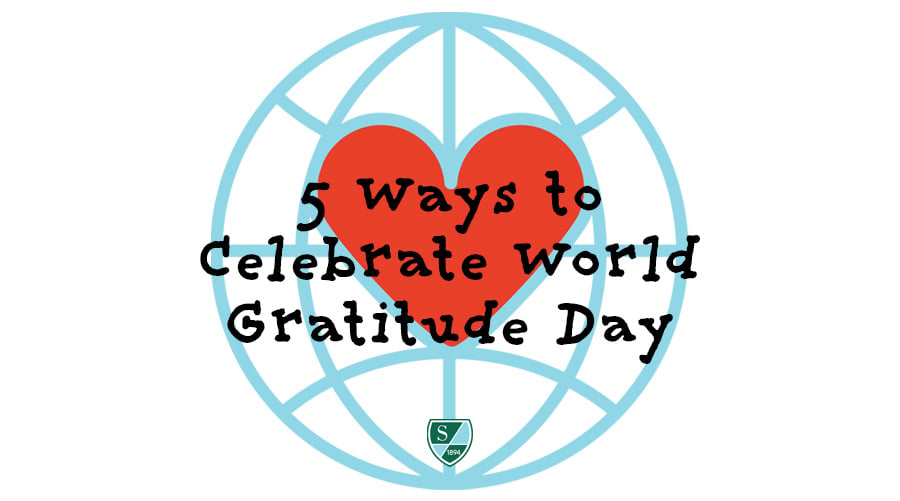September 21, 2020 is World Gratitude Day, and we’d like you and the children in your life to join in the celebration with us! One of the 24 character strengths that make up the backbone of Shipley’s positive education framework, gratitude can be a powerful tool to help you flourish. Research indicates there are both emotional and physical health benefits when gratitude is practiced regularly, including: increased happiness, improved sleep and physical health, a more optimistic outlook, increased meaning and life satisfaction, stronger relationships, and greater success.
This doesn’t mean that we ignore all of the challenges or “negative” experiences in our lives (read this recent blog post by Dr. Nick Holton about the importance of the “negative”). Rather, we can use gratitude to help us reframe our perspective. If used purposefully, gratitude can give us hope, heal us, and help us cope in difficult times. We may not always feel grateful, but we can be grateful. In turn, that attitude of gratitude will help you power through life’s tough moments.
Here are some ways that you can practice gratitude with your children today (and everyday).
- Send a Video of Gratitude to Your Child’s Teachers
Let’s be honest: being a teacher is hard, and being a teacher in 2020 is so much harder. Record a video with a message of gratitude for your child’s teachers and send it to them. It won’t just make them feel great, you will reap the rewards, too. - Start a Family Gratitude Jar (or Journal)
Talk about your day as a family, focusing on the things that you are grateful for having happened. Write them down on a piece of paper with the date and stick it in a jar. At the end of the year, spend some time reading through all of the experiences your family was grateful for and bask in the glow that a year of gratitude can bring. - Make a Gratitude List (or Drawing)
Talk with your child about everything they are grateful for and make a list (or a drawing) that they can look at when they’re feeling down or discouraged. The list can focus on people, things, places, life circumstances, and whatever else your child identifies. - Focus on "What Went Well"
The brain is a combination spotlight and vacuum cleaner. What it highlights, it sucks up, for better or for worse. So, highlight the good stuff! Whether you're around the family dinner table or in the car on the way to practice or an event, it's easy and important to have conversations about what went well in your child's day or week. Simply take a few minutes to ask them to identify or talk about some good things that happened or that they've noticed. If they struggle with this, provide a bit of support in helping them notice the small stuff (e.g. it's not so humid out anymore, we got to have pizza for dinner, I had a school lesson in social studies today, etc.). - Do a Gratitude Meditation
Encourage your child to take a few minutes to sit quietly and reflect on things they are grateful for. A guided meditation can help direct their thoughts. Here are two to try (one for younger and one for older children):
The Gratitude Garden Meditation
(good for younger children)
The Change to Chill Gratitude Meditation
(good for older children and teens)
Guided Gratitude Meditation
(by Shipley’s very own SEED teacher, Marc Balcer)
Want to learn more?
Read How Gratitude Can Help You Through Hard Times by Robert Emmons, the world’s leading scientific expert on gratitude.
Listen to Gratitude as Mindfulness Practice, a talk by Shipley SEED teacher Marc Balcer (this includes a guided meditation in the middle).
Read The Power of Gratitude by Shipley SEED teacher Marc Balcer.










